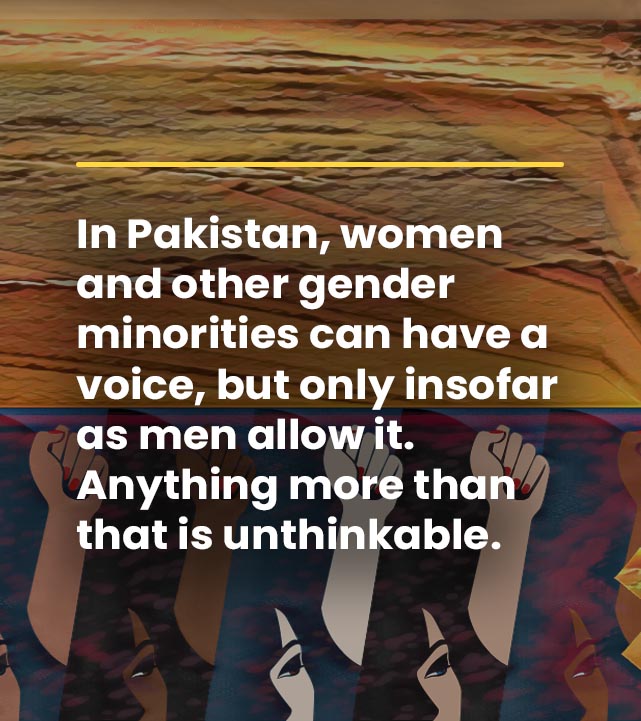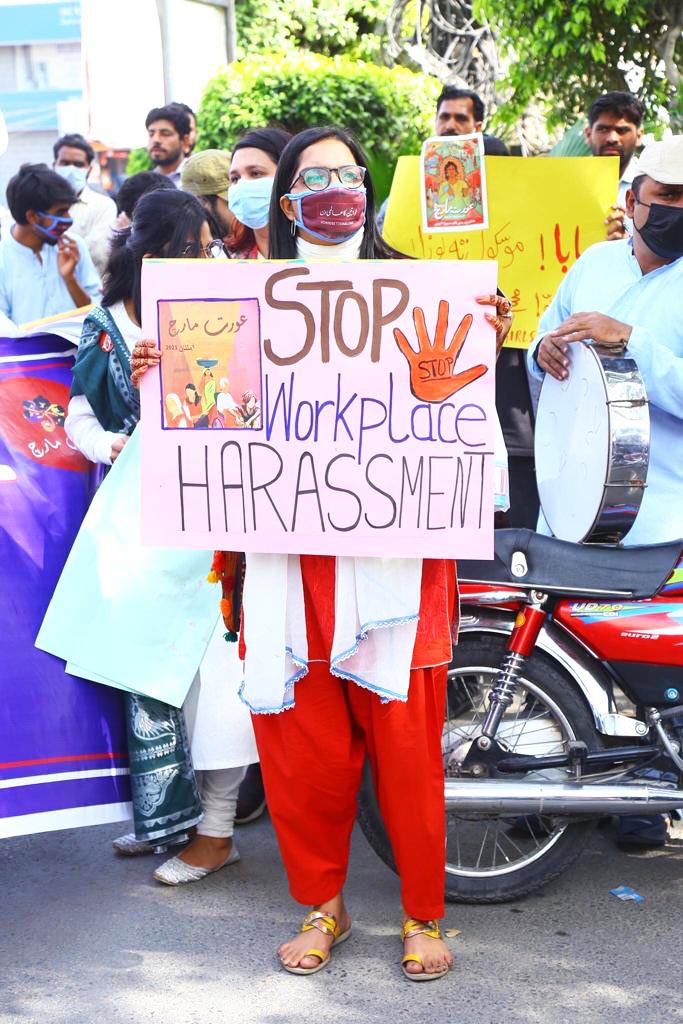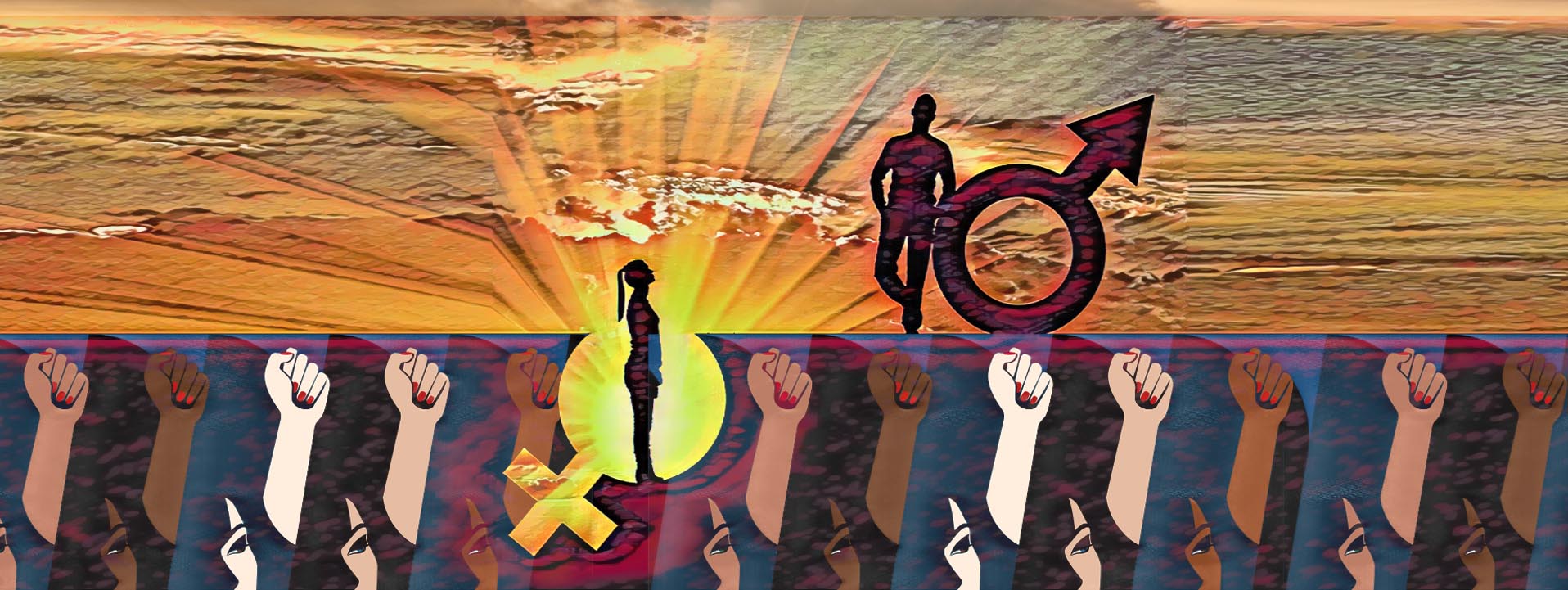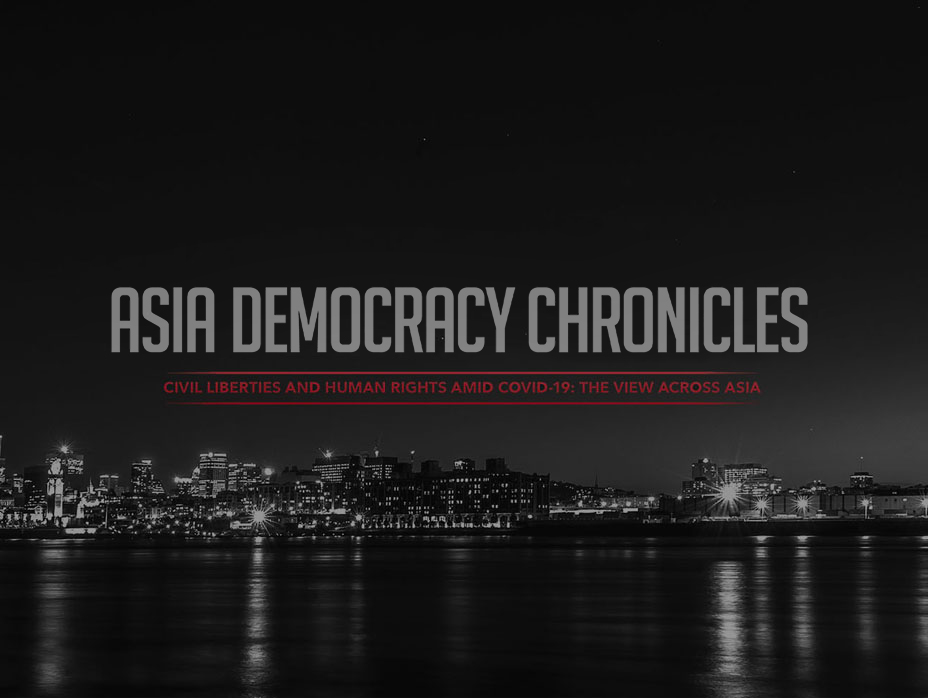In the wee hours of September 9, 2020, a car puttered to a halt along one of the roads connecting Lahore and Gujranwala, two of Pakistan’s metropolitan cities. The gas had run out. Its driver, a woman, called her relatives in Gujranwala, and soon, someone drove out to pick her up.
But when the relative finally made it, he found her bloodied and afraid, her children sitting in the back, traumatized. It turned out, according to official police reports, that two armed men broke into her car, dragged her and her kids to a nearby field where they sexually assaulted her at gunpoint. They had also taken her cash, jewelry, and other valuables.
The following day, Umer Sheikh, lead police investigator assigned to her case, went on-air and implied that her assault was her own doing. She should have taken a busier road, he said, and why didn’t she check her fuel before leaving?
In the days that followed, thousands of women flooded the streets of Pakistan urging authorities to help the victim seek justice – and calling for Sheikh’s termination. Victim-blaming has no place among the ranks of law enforcement. The protests were so potent that it triggered a swift response from Pakistan law enforcement agencies. Sheikh eventually apologized for his remarks and the two accused in the rape case were sentenced to death.
Before long, the protests blossomed into a fiery feminist movement that was seeking sweeping reforms to the police, court, prison, and medico-legal systems in the country.
Pakistan is a nation where patriarchal sensibilities still run very deep, and typically, this has meant that the voices of women in mainstream society have been stifled. But these recent demonstrations prove that women, along with the non-binary and LGBTQIA+ community, will always push back against the status quo, even if the road ahead is still rife with challenges.

In 2020, Laiba Zainab, activist and journalist, took part in organizing the Aurat Azadi Marches, also known as the Women Freedom Marches. Because of the pandemic, much of the protests had to migrate online, where it nevertheless flourished. (Photo by Azeem Raza)
A growing movement
Women’s activism has had a long and troubled history in Pakistan. The country still subscribes strongly to social norms that relegate, even confine, women to the domestic realm, hindering any participation in civil society or activism.
The few women who do assert their right to occupy civic space find themselves on the dangerous end of attacks – either only rhetorical or otherwise – by men who see emancipation as a threat. As a result, women activism in Pakistan has always been weak. According to the 2020 Global Gender Gap Report of the World Economic Forum, the South Asian country is third-worst country in the world for women, based on political empowerment, economic participation, educational attainment, and health and survival.
But though the situation is fraught for women, the outlook is even grimmer for people in the LGBTQIA+ community, particularly those who identify as trans and non-binary.
The first buds of women’s emancipation sprouted in the early 1980s, which saw “a mass mobilization of politically conscious women, a development that was unprecedented in the country, who set out the challenge Zia’s gender-discriminatory laws,” according to a 2018 paper by Rahat Imran and Imran Munir, both Pakistani scholars.
General Zia-ul-Haq was a dictator, who in the years between 1977 and 1988 ran an oppressive Islamization process in Pakistan, cracking down on freedom of speech, as well as basic and women’s rights. Back then, the women’s movement had to happen in stealth. Since they weren’t allowed to attend protests, women would instead organize and meet in secret, hiding their activism from their families.
From their underground emancipation movement in the 1980s, Pakistani women have since played a crucial role in ousting beliefs like Chaadar and chardewari, an old saying that relegates women to their proper place: behind a veil and within four walls.
The growing feminist movement also posed a direct and potent challenge to the culture of silence in the country, teaching more and more women that they have to show up, that they can’t just keep quiet. They have to make themselves heard.
More recently, this wave of activism among women has taken the form the three very successful Aurat Azadi Marches or the Woman Freedom Marches, which fight for women’s property rights, minority rights, basic rights to education, and trans rights, as well as strict action against workplace harassment, domestic violence, honor killings, acid attacks, and child marriages.
Laiba Zainab is an activist and journalist who helped organize the Aurat March in 2020. She says: “In a country like Pakistan, women’s, non-binary, and trans advocacy is awfully tough. We have to deal with threats of rape and character assassination. Many people find it risky to leave their homes.”
“My family is supportive, but they don’t like the idea when I talk about feminism openly,” she adds.
As if things weren’t tough enough, the COVID-19 pandemic put March attendees in direct and serious risk of infection, so Zainab and her co-organizers had to move the event online. Though it lacked the massive presence on the streets, the 2020 online March nevertheless attracted a large number of people and gave birth to dynamic discussions on social media.
Amid the pandemic, digital activism, despite its significant challenges, provided Zainab and other community organizers a shelter from suffering and hopelessness, and even helped them drum up public interest and collective solidarity.
The Aurat Marches have also invited severe criticism, particularly from the more conservative camps in Pakistani society, who label it blindly as Western agenda, or who see the use of placards as vulgarism.
But in 2021, despite the protracted pandemic and all the detractions, the Aurat Marches have found their bearing. The March drew much larger crowds in Lahore, Islamabad, and Karachi, and has even expanded to more cities across the country. The strong turnout was unexpected, especially since the health risks were still present, but Zainab thinks that gender minorities have grown tired of decades of oppression and are now taking a more active role in changing society for the better for themselves.

A perpetual dance
While the gains have been great over the years, gender equality unfortunately still remains far on Pakistan’s horizon.
Bushra Mahnoor, activist and member of the Feminist Students Collective, an organization that forwards the rights of students, says the uptick in feminist protests in various cities and the growing participation of women and the LGBTQIA+ doesn’t necessarily mean that their voices are being heard, especially so for people who identify as trans.
She points to one particular protest for trans rights, to which some celebrities suddenly appeared. The media coverage of the event then mostly revolved around these personalities, barely glossing over what the protest was about in the first place.
Indeed, the media are also often on the wrong side of the battle. Hina Tariq, an activist who identifies as non-binary, was attacked by a journalist at a protest in Karachi. They believe that the confrontation was due completely to their identity – that they were both an ethnic and gender minority.
“He attacked me because he was offended by my identity,” Tariq wrote on social media after the event. “I am very much visible about my identities. I am a proud socialist and I will remain one till the day I die. You cannot really push me into silence.”
This wasn’t their first experience with a personal attack – they had been abused and harassed many, many times before – but nevertheless, all forms of harassment are wrong, and incredibly traumatizing.
This is the type of fraught, often violent, environment that feminist movements in Pakistan have to contend with. Women and the LGBTQIA+ community do join, even organize, protests, but their voices remain crushed, buried under a conservative society subscribed to dangerous traditional beliefs.
Women grow up and are taught to be meek and obedient. Around them, most groups of people refuse to even recognize that queer and non-binary folk are legitimate, depriving them of education and forcing upon them identification cards dismissive of their identities. There are many obstacles to overcome, Mahoor says.
‘’At the present moment, under the current government, feminism and women’s rights are very much under threat,” says Benzair Jatoi, a barrister whose work focuses on women and minority rights. “We should not be fooled by a few ‘good’ laws but by the tone and the narrative that has been set by the government since it’s been in power.”
“Whether it is to appease the religious right, to emerge as a populist government, or it is truly the ruling party’s belief system, it has consistently responded with statements that are dangerous,” she adds, citing the following as examples: “the PM making statements about how Western feminism is ruining our country, and blaming women’s clothing and the lack of purdah as reasons for sexual violence.”
In Pakistan, women and other gender minorities can have a voice, but only insofar as men allow it. Anything more than that is unthinkable. Farther still from reality is that watershed moment, ushering in a change in society that would make it more welcoming to gender minorities.
For these reasons, feminism has always had a fragile footing in the country. The military dictatorships and strict control of religious leaders over social discourse have only made things worse, and have trapped feminist activists in a perpetual dance of one step forward, two steps back.
But, as Jatoi says, hope is never lost. The feminist movement in Pakistan has stood brave in the face of violent repression countless of times before, and it will continue to do so. ●
Saba Chaudhary is a freelance journalist and writer based in Pakistan, specializing in gender, identity, and social issues.



















